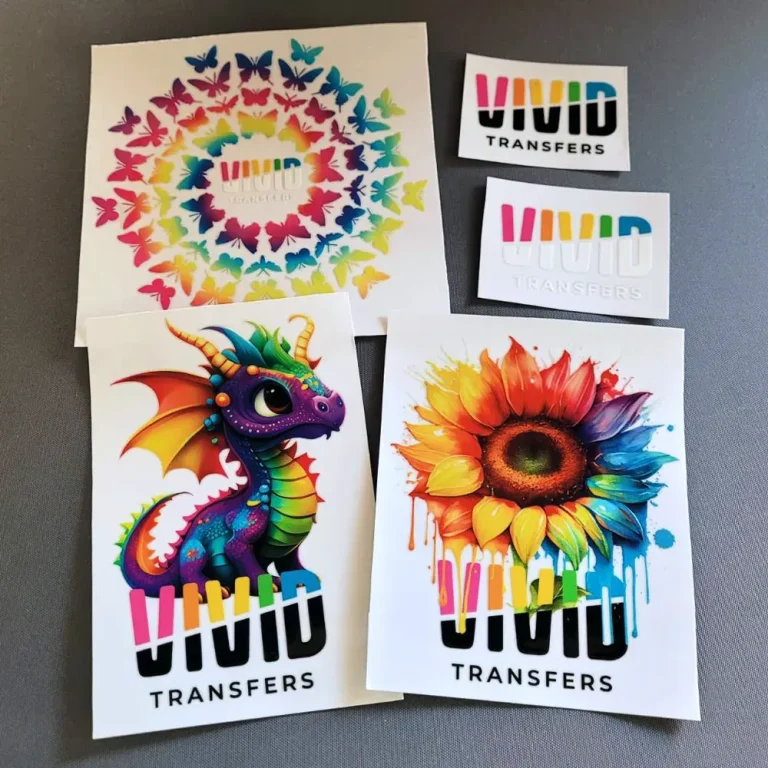In the rapidly evolving landscape of custom printing, **UV DTF Transfers** (Ultra Violet Direct to Film Transfers) have emerged as a groundbreaking solution that merges the precision of UV printing technology with the efficiency of direct-to-film methods. This innovative technique allows for stunningly vivid designs to be applied to a multitude of surfaces, making it a favorite among creators and businesses alike. With the versatility of DTF printing, companies can now produce high-quality, durable products tailored to their branding needs while prioritizing sustainable printing practices. Whether it’s for custom apparel, promotional items, or unique decor, UV DTF transfers offer unmatched applications that stand the test of time. Dive into this guide to discover how you can leverage these advanced transfer printing techniques to elevate your product offerings.
As the custom printing industry continues to flourish, other terminologies such as Direct Transfer Film Printing and UV Transfer Solutions are increasingly recognized among professionals. These alternative designations highlight a technology that delivers high-resolution imagery while catering to diverse substrates, from textiles to rigid materials. With the emphasis on sustainability in printing practices today, these advanced printing methods are being explored for eco-conscious production, ensuring that businesses can meet market demands without compromising quality. The scope of transfer applications is broad, making innovative printing solutions critical for those looking to stand out in a competitive landscape. Whether you’re a small business owner or a creative enthusiast, understanding these methods can significantly enhance your approach to custom projects.
Exploring the Mechanism of UV DTF Transfers
At its core, UV DTF Transfers operates on a meticulously designed three-step process. Initially, the technique starts with the printing of a high-resolution image onto a special film using UV inks. This type of printing is significant because it allows for the creation of vivid and detailed designs. The quality of UV inks ensures that colors remain vibrant and are well-suited for varied applications, spanning textiles, glass, and metals.
The next step involves applying an adhesive layer onto the printed film. This adhesive is crucial as it creates a solid bond with the substrate when the transfer is executed. Finally, the film is cured using UV light, which solidifies the inks and adhesive, resulting in a durable, high-quality print that can withstand both time and wear.
Frequently Asked Questions
What are UV DTF Transfers and how do they work?
UV DTF Transfers, or Ultra Violet Direct to Film Transfers, are a printing technology that combines UV printing with direct-to-film methods. This process involves printing a design using UV inks onto a special film, applying an adhesive, and then curing it with UV light to ensure vibrant and durable prints.
What are the advantages of using UV DTF Transfers for custom printing?
The advantages of UV DTF Transfers include their versatility to adhere to multiple surfaces (like fabric, metals, and plastics), the production of high-quality, vibrant images, and the durability of the final products which resist fading and scratches, making them ideal for custom apparel and promotional products.
How does the sustainability of UV DTF Transfers compare to other printing techniques?
UV DTF Transfers are considered a more sustainable printing option due to their efficient use of materials and the development of eco-friendly UV inks. This technology minimizes waste and energy consumption compared to traditional printing methods, aligning with the growing demand for sustainable printing solutions.
What types of products can be created using UV DTF Transfers?
UV DTF Transfers can be used to create a wide range of products including custom apparel (t-shirts, hats), promotional items (keychains, mugs), vibrant signage, and personalized home decor items, offering endless possibilities in custom printing applications.
What equipment is necessary for starting UV DTF Transfers printing?
To begin with UV DTF Transfers printing, you’ll need specialized printers compatible with UV and DTF inks, as well as UV curing units to solidify prints after adhesive application. Investing in reliable equipment is crucial for achieving high-quality outputs.
What trends are emerging in the UV DTF Transfers market?
Emerging trends in the UV DTF Transfers market include a growing demand for eco-friendly printing solutions, advancements in faster printing technologies, and the development of printers that offer quicker curing times and improved print quality, reflecting the evolving preferences of consumers.
| Key Points | Details |
|---|---|
| What is UV DTF Transfers? | A specialized printing technique using UV inks on film to produce high-resolution images for various substrates. |
| Process Breakdown | 1. Printing on Film 2. Adhesive Application 3. Curing with UV Light |
| Benefits | – Versatility across surfaces – High-quality, detailed images – Durable and resistant to fading |
| Applications | – Custom apparel – Promotional products – Signage – Home decor |
| Emerging Market Trends | – Growing demand for sustainability – Advances in eco-friendly inks and faster printing technologies |
| Required Equipment | – Specialized printers for UV and DTF inks – UV curing units for solidification processes |
Summary
UV DTF Transfers represent an innovative leap in the world of printing, integrating the strengths of UV printing with the adaptability of direct-to-film techniques. This process empowers businesses and creators alike by offering a durable solution that can produce vivid, long-lasting prints on a variety of surfaces. With a growing demand for customization, sustainability, and high-quality outputs, UV DTF Transfers are shaping the future of the printing industry and enabling users to explore endless creative possibilities.

